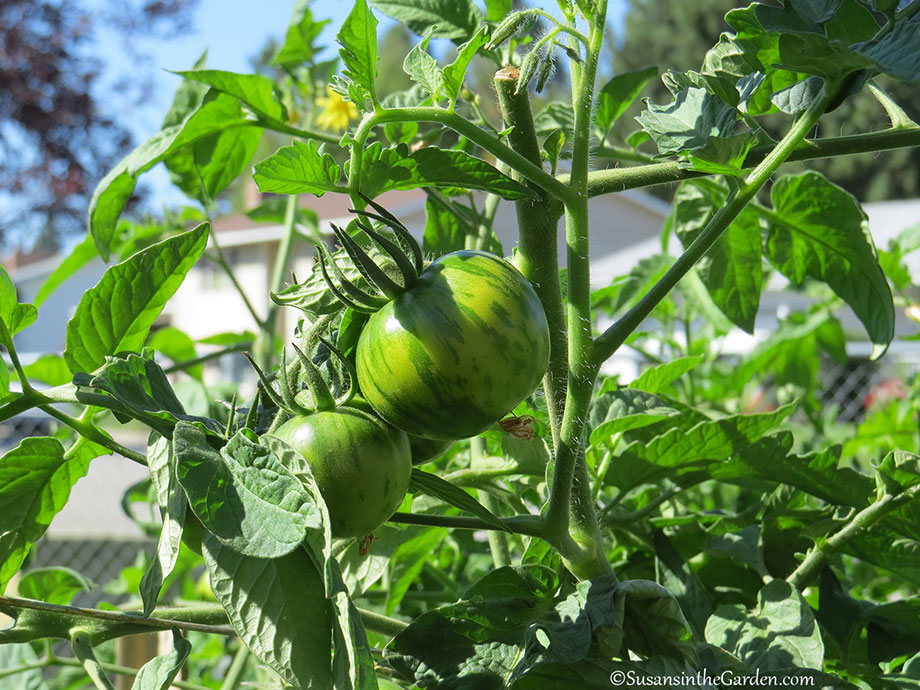Column: When to Start Tomato Plants

Even though it’s a bit early to start tomato plants, a lot of folks tend to jump the gun. I’m not picking on you, though, because I used to be in that group, too!
But that’s the reason why I decided to write about that very topic this week. In addition to stressing the plants by starting their seeds indoors too soon, there are other potential problems. Vegetable plant disorders are problems that aren’t caused by disease pathogens. They can result from extreme weather conditions or things we gardeners did (or didn’t) do.
In my column, I talk about two frustrating tomato plant disorders: leaf roll and catfacing. Each can be caused by exposure to temperatures that are too cold for them. I recommend waiting about 5 weeks prior to your last spring frost date before starting the seeds.
Here’s the column. I hope you’ll find a lot of useful information in it. You’ll notice that I mentioned the importance of hardening-off the seedlings at the end. I’m going to go into that in more detail in my next column.
by Susan Mulvihill
Have you started your tomato plants from seed yet? I have found that waiting until the first week of April is the best time for this.
For years, I would get excited and start the plants way too soon. That usually resulted in leggy, pot-bound seedlings since they had to bide their time until the danger of frost had passed. The plants would be stressed, which impacted how well they produced during the season.
Here in the Inland Northwest, our last frost occurs about the middle of May. But sometimes the soil takes longer to warm up. That’s what happened last year and everyone’s tomatoes really struggled. It’s a good idea to aim for a planting date of around the first of June, while keeping a close eye on the extended forecast.
I understand how hard it is to be patient – especially if you’re hoping to have the first ripe tomato on the block – but there are other good reasons for waiting. While I was researching vegetable plant disorders for “The Vegetable Garden Problem Solver Handbook,” I learned how cool spring temperatures can adversely impact tomatoes and other warm-season crops.
Plant disorders aren’t caused by disease pathogens but rather by weather conditions or some of our gardening practices that have negative consequences.
For example, you might notice that the leaves of your tomato plants suddenly curl upward early in the season. This is officially known as physiological leaf roll. It was one of the first disorders I learned about in my early days as a Master Gardener. Not coincidentally, that was also back when I had a tendency to plant my tomatoes too early in the season.
While leaf roll also can occur during heat waves, it’s frequently seen in the spring as a plant’s reaction to cooler temperatures. This disorder can impact beans, peppers, potatoes and watermelons as well.
Tomato catfacing is another disorder that can arise when young seedlings are exposed to temperatures below 54 degrees F. Symptoms of this are scars or creases near the blossom-end of the fruit, brown corky tissue, and sometimes part of the cavities within the tomato are exposed. The tomatoes are still edible but they won’t win any prizes at the fair.
Whenever I transplant my tomato seedlings into the garden, I like to baby them a bit. I put hoops over their bed and place a layer of floating row cover on top for about 2 weeks. The cover provides a little extra warmth.
If you’ve already started your tomato plants indoors, try to keep them stress-free. Make sure they get plenty of light. My grow lights are on a timer that turns them on at 6 a.m. and turns them off at 9 p.m.
Water the plants regularly. Their potting soil should be lightly moist rather than dry or sopping wet.
If you see the roots coming out of the bottom of the pot, it’s time to transplant them into a larger container. Stake any plants that are getting leggy from stretching toward the light. This will give them the support they need and protect them from toppling over or breaking. If the top does break off, put it into a glass of water immediately. Once it forms roots, you can pot it up and save the day.
Remember to gradually acclimate the plants to outdoor temperatures and sunlight for 7 to 10 days before transplanting them into the garden.
Susan Mulvihill is author of “The Vegetable Garden Problem Solver Handbook” and “The Vegetable Garden Pest Handbook.” She can be reached at Susan@SusansintheGarden.com. Watch this week’s video at youtube.com/susansinthegarden.

